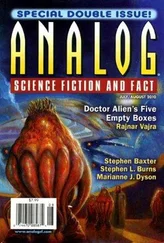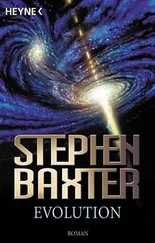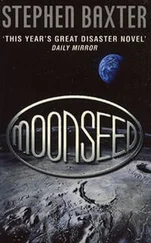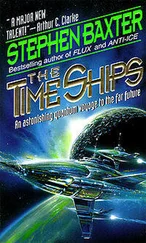He pulled off his gloves. He turned to Emma, opened up her helmet, lifted it off carefully, and let it drift away. Emma’s burned-red cheek was cold to his touch, but he could feel a pulse, see breath mist softly around her mouth.
He took time to kiss her, softly. Then he used his own helmet nipple to give her a drink of orange juice.
He tried to treat Emma’s wounded leg. He didn’t like the look of what he saw below the improvised tether tourniquet. The blood and flesh, exposed to vacuum, was frozen, the undamaged skin glassy. But at least she hadn’t bled to death, he thought, and she didn’t seem to be in any pain. He cleaned up the wound as best he could.
“Malenfant?”
The sound, completely unexpected, made him gasp, turn.
She was awake, and looking at him.
Maura Della:
Life on the Hill had gotten a lot harder, even without the protestors. And the chanting of the protestors, cult groups, and other disaffected citizens in the streets outside, always an irritant, had become a constant distraction. There were times — even here, behind the layers of toughened glass — when she could hear the cries of pain, the smash of glass, the smoky crackle of small-arms fire, the slap and crash of grenade launchers.
Maura believed there was something deep and troubling going on in the collective American psyche right now. She’d always worked on the belief that Americans liked to imagine themselves elevated from the general human fray, if only a little. Americans had the most robust political system, the best technology, the strongest economy, the finest national character and spirit. Of course it was mostly myth, but it wasn’t a bad myth as national fever dreams went, and Maura knew that Americans’ faith in themselves had, historically, tended to turn them into a positive force in the world.
But there was a downside. Whenever things went bad, whenever the myth of superiority and competence was challenged, Americans would look outside, for somebody or something to blame for their troubles. And, whatever went wrong with the world, there was always an element who would blame the government.
Fair enough. But how the hell was she supposed to concentrate with all that going on?
But, of course, she had to.
Just as she had to ignore the other inconveniences of the post-Nevada world. Such as the fact that she wasn’t allowed to use e-mail, photocopiers, scanners, or even manual typewriters and carbon paper. All government business relating to Bootstrap and the Blue children was now conducted by handwritten note: one copy only, to be destroyed by the recipient after use.
Even her private diary was, strictly speaking, illegal now.
Depressed, she turned to the first fat report on her desk. It was set out in a clear, almost childish hand, presumably that of some baffled, sworn-to-silence secretary. She skimmed through a preface consisting of academic ass-covering bull: … able to offer no assurances as to the accuracy of this preliminary interpretation that has been produced, according to this group’s mandate, as a guide for further decision making and. . .
It was from the team of academics at Princeton who were trying to translate the messages the children had been sending to Earth. (She remembered Dan Ystebo’s apparently informed speculations on the subject, and she made a mental note to have one of the FBI plumbers dig out who was leaking this time.)
The sporadic signals were in the form of ultraviolet laser light targeted on an antiquated astronomy satellite in Earth orbit. Why they chose that means of transmission nobody knew, nor how they had gotten hold of or built a laser, nor why they felt impelled to transmit messages at all. Perhaps all that would come after the graybeard academic types at Princeton and elsewhere had figured out what the hell the kids were talking about here.
The message itself was text, encoded in a mixture of ASCII, English, other natural languages, and mathematics. But the natural-language stuff didn’t seem to bear much relation to the math, which itself was full of symbologies and referents whose meanings the academics were having to guess at.
The math appeared to be some kind of diatribe on fundamental physics.
Maura knew that for a century the theoreticians had been struggling to reconcile the two great pillars of physics: relativity, Einstein’s theory of gravity, and quantum mechanics, the theory of the submicroscopic world. The two theories were thought to be limited facets of a deeper understanding the academics called quantum gravity.
It is impossible to delimit a theory that does not yet exist, the report writers noted pompously. Nevertheless most theorists had expected to find the quantum paradigm more fundamental than the relativistic. The speculations of the children contradict this, however. . .
Maura skimmed on. Perhaps, the children seemed to be suggesting, fundamental particles — electrons and quarks and such — were actually spacetime defects, kinks in the fabric. For instance, a positive charge could be the mouth of a tiny wormhole threaded by an electric field, with a negative charge the other mouth, the flow of the field through the wormhole looking, from the outside, like a source and sink of charge. Einstein himself had speculated on these lines a century ago, but hadn’t been able to prove it or develop the theory to his satisfaction.
Anyhow, it seemed, Einstein hadn’t thought far enough. The children seemed to be saying that the key was to regard particles not just as loops or folds in space but as folds in time as well. Such a fold necessarily creates a closed timelike curve. . .
So every electron was a miniature time machine.
. . . This has clear implications for causality. The properties of a fundamental particle would be determined by measurements that can be made on it only in the future. That is, there is a boundary condition that is in principle unobservable in the present… Imagine a skipping rope, some dusty academic had dictated, struggling to make herself understood. If a handle is jiggled, the shape of the wave created depends not just on what is happening at the perturbed end but what happens at the other handle. . .
In this worldview it was this breach of causality that provided uncertainty, the famous multivalued fuzziness of the quantum world.
And so on, at baffling and tedious length.
She sat in her chair, struggling with the concepts.
So the world around her, the familiar solid world of atoms and people and trees and stars, even the components of her own aging body, was made up of nothing more than defects in space-time. There was nothing but space and time, knotted up and folded over on itself. If that’s so, she thought, maybe we shouldn’t be surprised at the eruption of all this acausal strangeness. It was there all along, just too low-level for us to see, too obscure for us to understand.
But was it possible?
Just accept it, Maura. The important thing, of course, is why the children are trying to communicate this to us.
… The children may be attempting to bridge the chasm in understanding between our patiently constructed but partial theories and their own apparently instinctive, or paradox-prescient, knowledge of the world’s structure. It may be they wish us to understand on a deeper level what has happened to us so far — or, possibly, what is to happen to us in the future. . .
A prediction, then.
Or a threat.
Maura shivered, despite the clammy warmth of her office.
Maura, skimming the transcript, found scraps of plain language interspersed with all this heavy stuff: We’re all right here. Please tell our parents we aren ‘t hot or cold or hungry but just right, and it s a lot of fun bouncing around on the Moon, like a big trampoline… You shouldn ‘t have done what you did when you dropped that big bomb on us and it just made us mad is all and some of us wanted to come back and hurt you the same but Anna said we mustn’t and it wasn’t really your fault that you cared for us underneath even if you didn ‘t know how to show it and. . .
Читать дальше
Конец ознакомительного отрывка
Купить книгу












